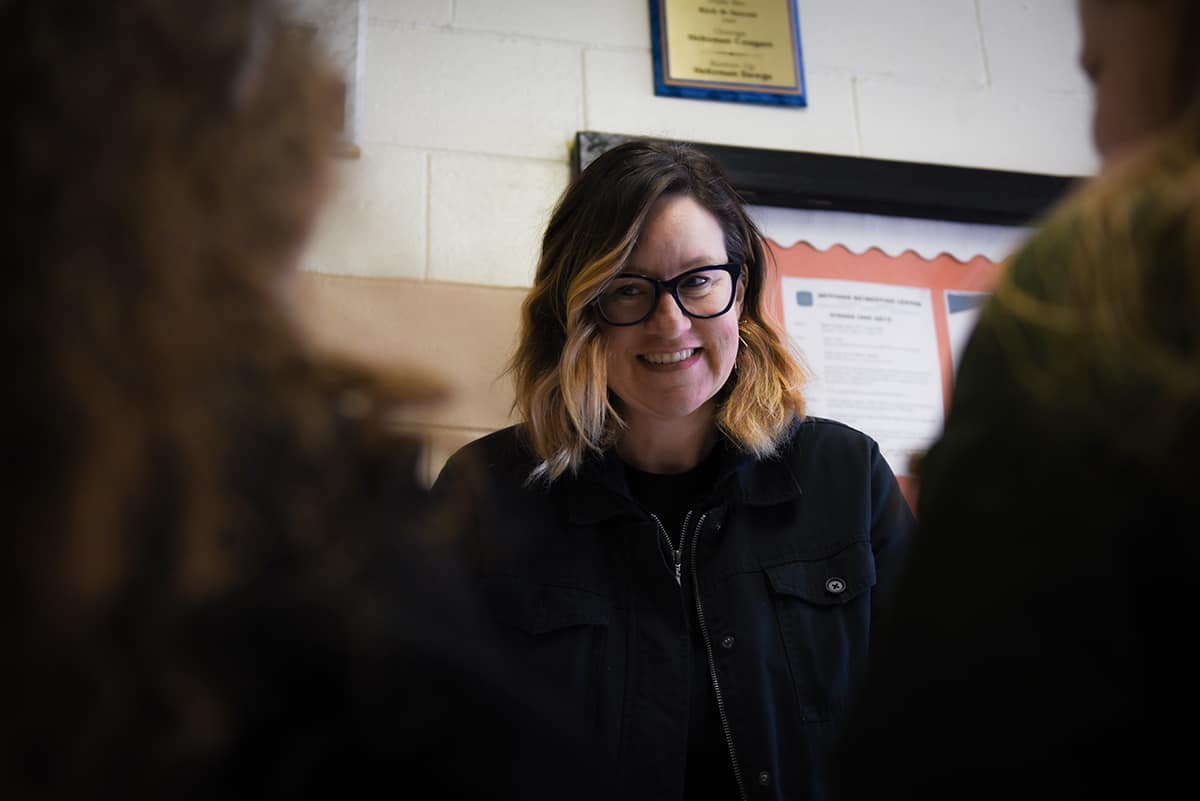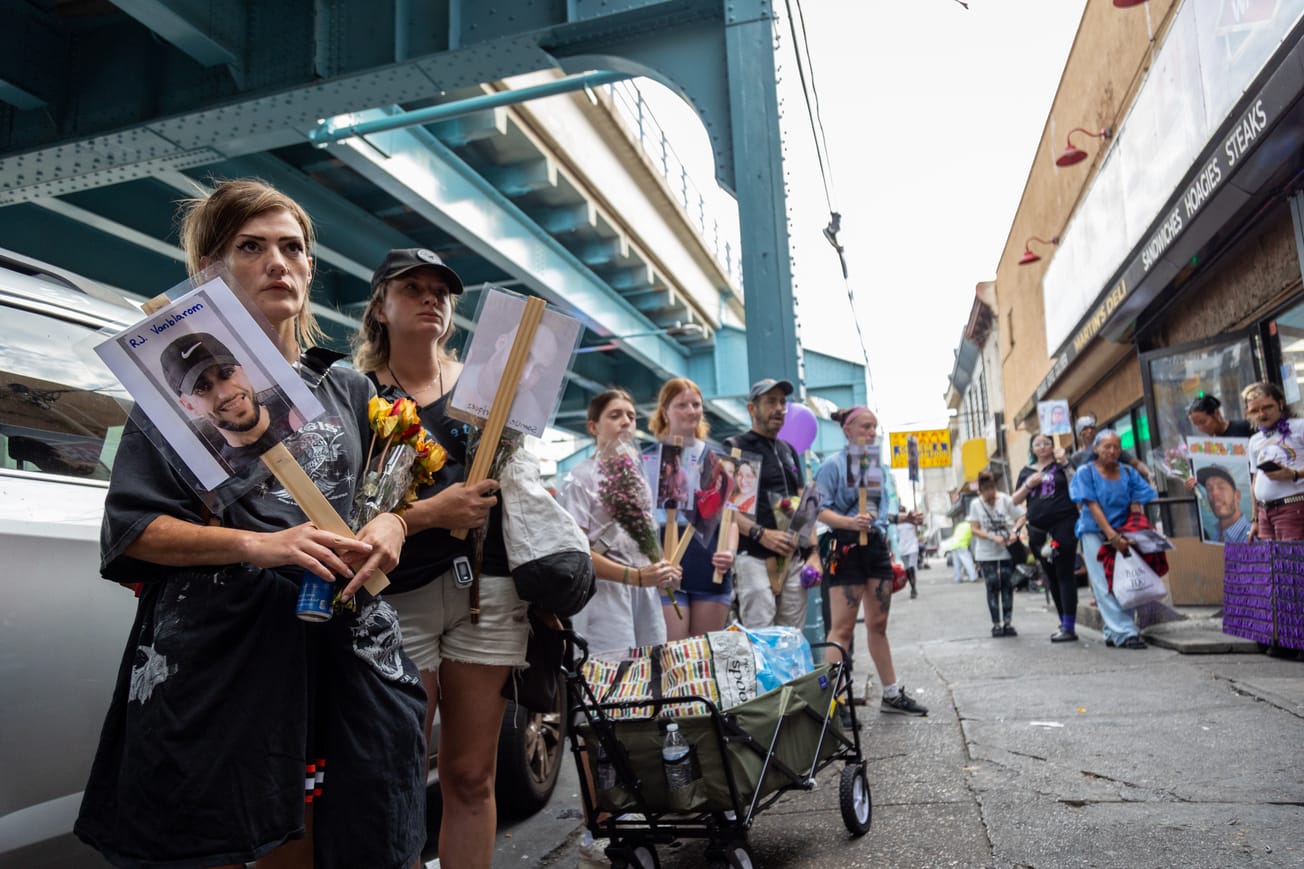Chera Kowalski remembers working at McPherson Square Library when overdoses became a more common occurrence in Kensington. It was 2015, and Philadelphia saw 696 overdose deaths that year — a 52% increase from just two years before — eighty percent of which involved opioids. There were more than twice as many overdose deaths than homicides.
At the time, library staff didn’t have naloxone — an opioid overdose reversal medication — or the training to administer it. The best staff members could do was call emergency services — which were experiencing longer response times from the increase in overdoses — and wait.
“It was extremely upsetting,” said Kowalski, the former adult/teen librarian at McPherson. “You’re standing there, you’re watching someone die, and there’s limited things that you can do to help the situation.”
So in 2016, Kowalski approached the Free Library of Philadelphia administration about providing naloxone and opioid overdose reversal training to library staff at McPherson.
By 2017, McPherson’s staff was fully trained on how to administer the medication by Prevention Point Philadelphia. That same year, Philadelphia saw the most overdose deaths to date — 1,217. Kowalski reversed six overdoses that year.

“The first time I was kind of in shock afterward,” Kowalski said of her first overdose reversal. “After that, I just went about my business. Each time I did a reversal, within ten minutes I was back sitting at my desk or participating in whatever type of work that needed to be done.”
Kowalski has since been promoted and now works as the assistant to the chief of staff for the Free Library out of the Parkway Central Library branch. Since leaving, she’s had time to reflect on the impact that witnessing trauma in the neighborhood had on her — especially trauma related to overdoses, which she feels are normalized.
“I thought I was doing well, but I wasn’t,” she said. “After things calmed down, I realized I needed to take better care of myself, and I also had time then to focus on not just personal stuff, but what I wanted to do with my public service.”
Secondary traumatic stress and compassion fatigue
Citizens like Chera Kowalski who step in to help in the event of an overdose aren’t medical professionals, and reversing overdoses isn’t part of their job description. However, they have a passion for helping their community at a time when there is a surplus of need and a scarcity of resources.
According to Dana Branson, a licensed clinical social worker and vicarious trauma researcher at Southeast Missouri State University, the overwhelming feeling of how much help is needed can cause distress in those who respond to emergencies like overdoses. Not only is the act of reversing an overdose traumatic when experienced once, but doing it on a regular basis and then going home each day knowing that there are still people who need help can have negative effects on a person’s life.
This is what experts like Branson classify as “secondary traumatic distress.” Secondary traumatic distress is often experienced by medical professionals, human service workers, or first responders who work with people who experience trauma on a regular basis, Branson said.

Branson, who has worked as a licensed clinical social worker for more than 22 years, wrote her doctoral dissertation on vicarious trauma and its effects on caregivers. Vicarious trauma is a term used to describe the emotional residue leftover from the traumatic experiences that clients share with their social worker or therapist. Branson herself has experienced its effects after hearing the traumatic experiences of her own clients.
“I discovered that I would go home to my wonderful, beautiful loving husband, and I would be like, “Just don’t even touch me,’” Branson said.
After a couple of months, Branson asked her colleague if she had ever experienced a lack of intimacy because of the stories she heard from clients. Explaining to Branson that it’s a common thing in the social work field that doesn’t get talked about a lot, her colleague introduced her to the term “vicarious trauma.”
“In your mind, you can picture it,” Branson said. “You can picture what it felt like, what it smelled like, what it would look like. You go home after your work day and these mental images of really unpleasant, aversive materials are in your mind.”
Professionally, this trauma can lead to cynicism, lack of productivity, and can even lead therapists to not ask about certain traumatic events, Branson said. As a result, it harms both the patient and the caregiver. And in a caregiver’s personal life, they may withdraw themselves from social settings, feel symptoms of depression, and even turn to alcohol and other substances to cope with these unsettling thoughts. It can also lead to desensitization to an experience that at first caused adverse emotional reactions.
“Vicarious trauma is cognitive. It’s something that can skew a practitioner’s worldview,” Branson said. “It can make them feel unsafe in their daily lives because their worldview has been tainted in a negative way by all the atrocities that they’ve experienced through somebody else.”
Similar to vicarious trauma, secondary traumatic stress can chip away at a person’s ability to feel emotionally connected to their work and can create issues within their personal and professional lives.
The difference between the two is that vicarious trauma specifically refers to therapists and social workers who engage in empathic relationships with clients and take on the emotional residue of their client’s trauma, whereas secondary traumatic stress refers to caregivers who work with people who have experienced trauma and feel overwhelmed by the amount of help needed, Branson said.
The importance of engaging in self-care practices
Branson says the best way for both bystanders and first responders to take care of themselves is to actively engage in self-care practices, which can be difficult for people drawn to helping individuals in times of crisis.
“Part of the curse of being someone who works in social services and wanting to help other people is that we tend to be very, very self-sacrificing,” Branson said.
According to Branson, many social workers, first responders, doctors, and nurses know that they need to engage in self-care, but actually taking the time for themselves can feel selfish or “goes against the core of their being.” It often results in caregivers giving the time they need to care for themselves to others and not practicing self-care.
In some cases, caregivers tend to work even harder thinking that if they solve the problem their clients face, they can then relax and take care of themselves. Branson says in a world where social services are in such high demand, it perpetuates a never-ending cycle of working too hard to try and solve a client’s issue, so they can subsequently solve their own.
“Healthy coping techniques would be things like relaxing, engaging in leisure activities, yoga, mindfulness techniques, and getting together with friends who are not part of your day job,” she said. “Not talking about social work all the time, having friends from other walks of life, and doing things outside of our work-life is really important.”
How local organizations promote self-care for employees
Impact Services, a nonprofit focused on workforce re-entry, housing, and community building, employs a trauma-informed approach to social services that not only teaches staff how to better care for their clients but to care for themselves, too.
“We very intentionally talk about what it means to have a self-care plan,” said Zoë Van Orsdol, the public health projects manager at Impact. “That ongoing commitment — that we all have to pretty consciously make — to think about, ‘What are the things that I can do to make sure that I foster resiliency within myself?’”

Before almost every meeting, staffers check in with each other to take their “emotional temperature,” which lets others know where they stand. By checking in with one another, it enables coworkers to understand and empathize with their peers to better collaborate and tackle the day’s tasks.
According to Van Orsdol, a check-in requires three questions: How am I feeling? What’s my goal for today? Who can I look to for help?
Van Orsdol said that answering these questions honestly helps ground oneself before the start of a day and promotes emotional intelligence in staff. Check-ins are about acknowledging that coworkers are a part of a community and that there is a social responsibility to one another, she added.
Each member of Impact Services also creates a “safety plan,” or a list of activities or techniques that they can use to help center themselves when faced with stress or adversity. Safety plans are specific to each individual, as some mindfulness techniques work for some and may not work for others. When looking for mindfulness throughout a hectic work day, Van Orsdol suggests starting with the five senses.
“Picture something in the room and think about, ‘What does that feel like?’ Take a deep breath. ‘What does the room smell like?’” she said. “There’s also muscle relaxation, like wiggling your toes and then relaxing your toes. Then moving up to your ankles and relaxing your ankles, and then your legs and kind of moving up the body.”

Grounding techniques vary from person to person. Van Orsdol’s most recent technique has been to try and name all 30 teams in the NBA.
“I am usually able to get them all, but if I’m doing it before I fall asleep, I rarely get out of the Eastern Conference,” she said.
At Prevention Point Philadelphia, a harm reduction nonprofit that provides respite housing, medical services, and overdose reversal training to the public, the mental health of staff is given high priority, said Clayton Ruley, the director of community engagement and volunteer services.
Employees can take part in organizational-wide yoga that encourages staff to reflect and practice mindfulness during distressful times. Also, if someone has experienced a traumatic event in their work day, they can take time off to recuperate, Ruley said.
“We have a very understanding executive director and senior leadership,” said Ruley. “We definitely try to check in with people on a regular basis and want folks to feel comfortable and to take care of themselves.”
Ruley said his self-care practices include taking walks, playing with his dog, and watching Philadelphia’s sports teams in his downtime.
Without proper self-care, burnout is real
According to Branson, research on secondary trauma has shown that some caregivers tend to work harder when faced with adversity. It can be hard to recognize burnout and secondary traumatic stress are affecting your life, Kowalski said.
“Taking care of yourself is exhausting within itself,” Kowalski said. “Burnout is real and that’s part of my motivation for taking the new position because I was able to realize that I was burned out.”
Kowalski and her colleagues are looking to incorporate trauma-informed approaches into the Philadelphia Free Library’s practices. In the time that’s passed since Kowalski worked as a librarian at McPherson, she has more time to research ways to affect change in the Kensington community.
“I wasn’t able to offer the best public service that I was able to in the past and I needed to re-energize,” she said.
What did you think about this story? Send a note to editors@kensingtonvoice.com, and we’ll consider publishing it in our Voices section. You can also tell us what you think in person at our neighborhood events.
Editor: Jillian Bauer-Reese / Story Designer: Jillian Bauer-Reese / Translator: Kristine Aponte





